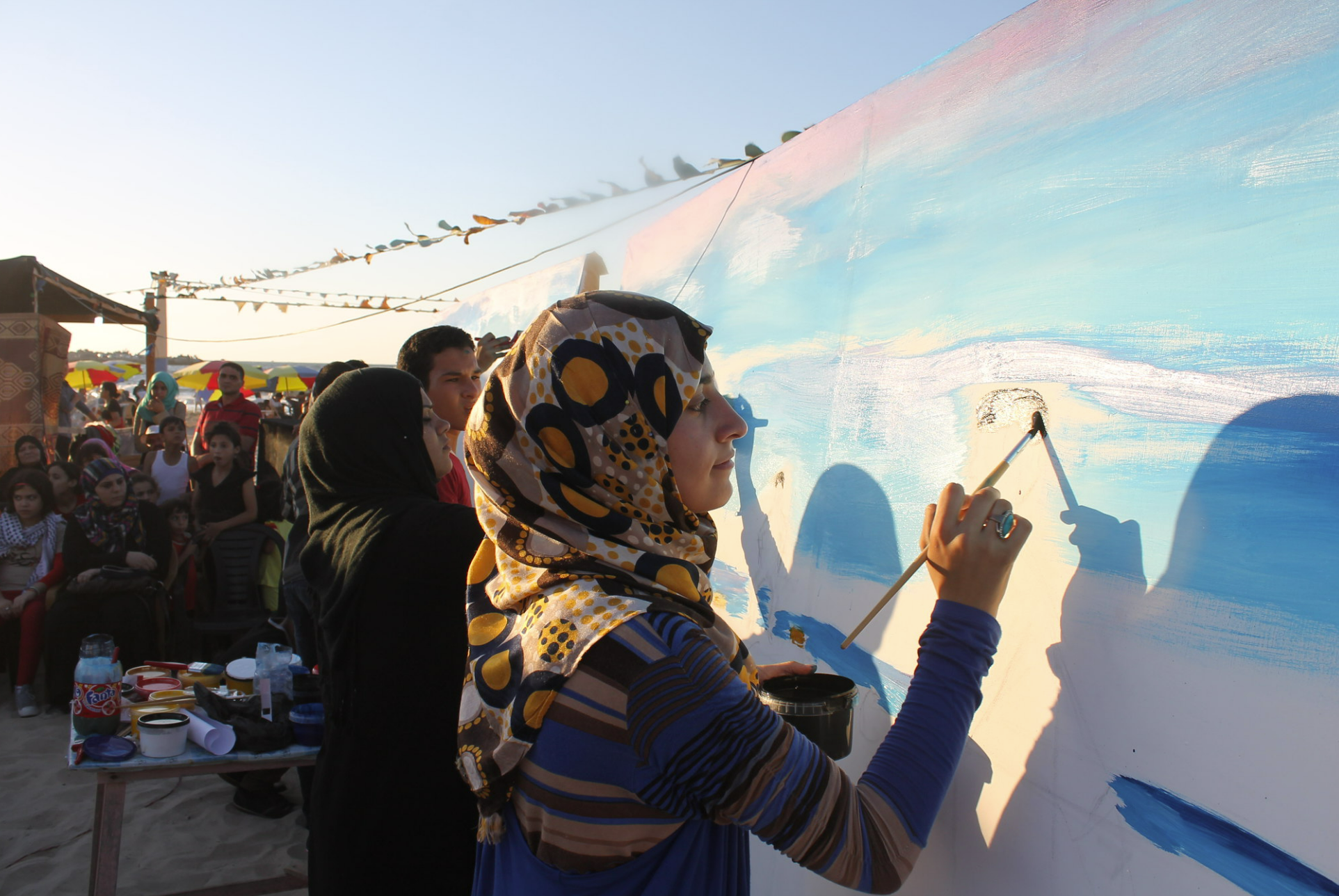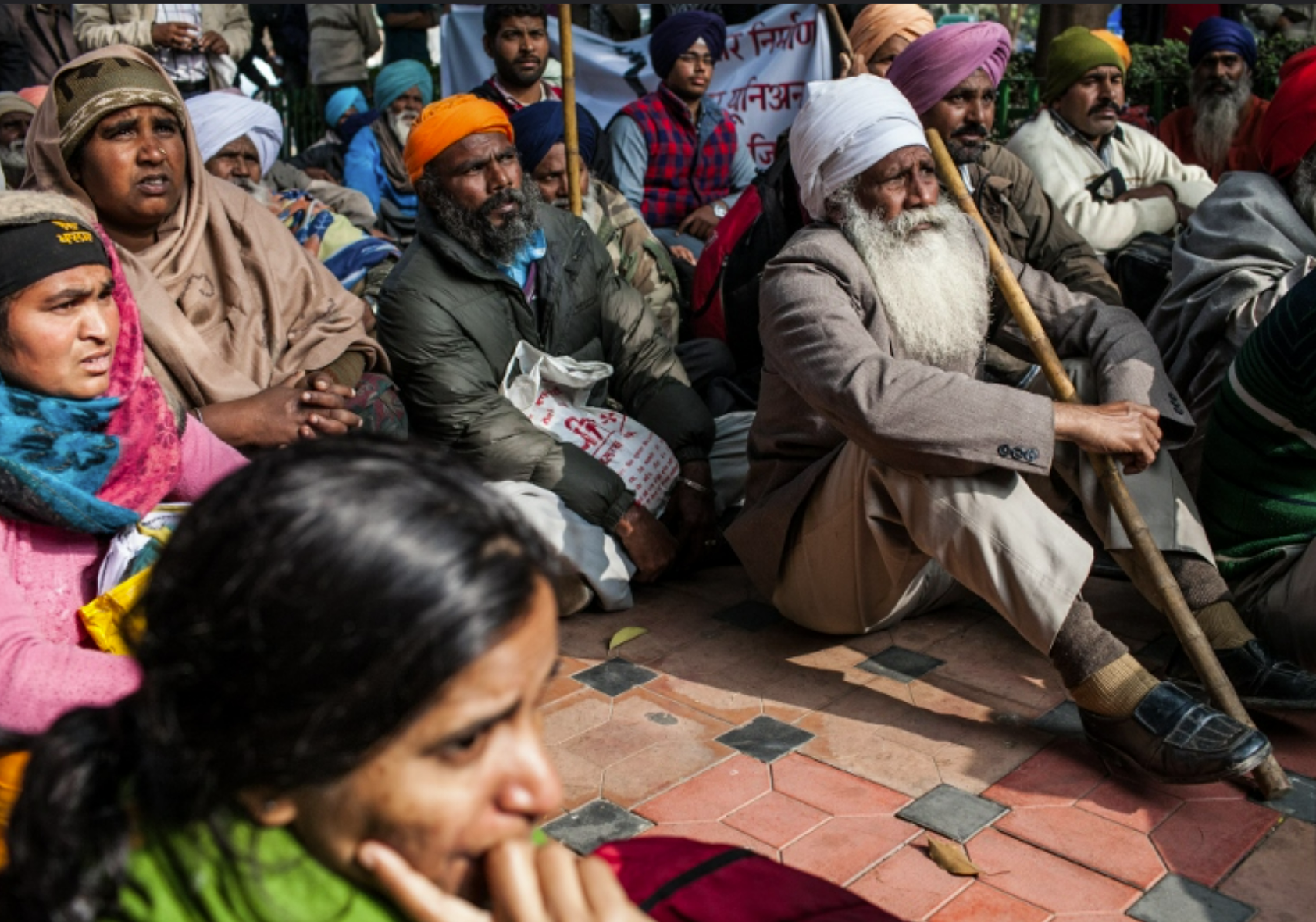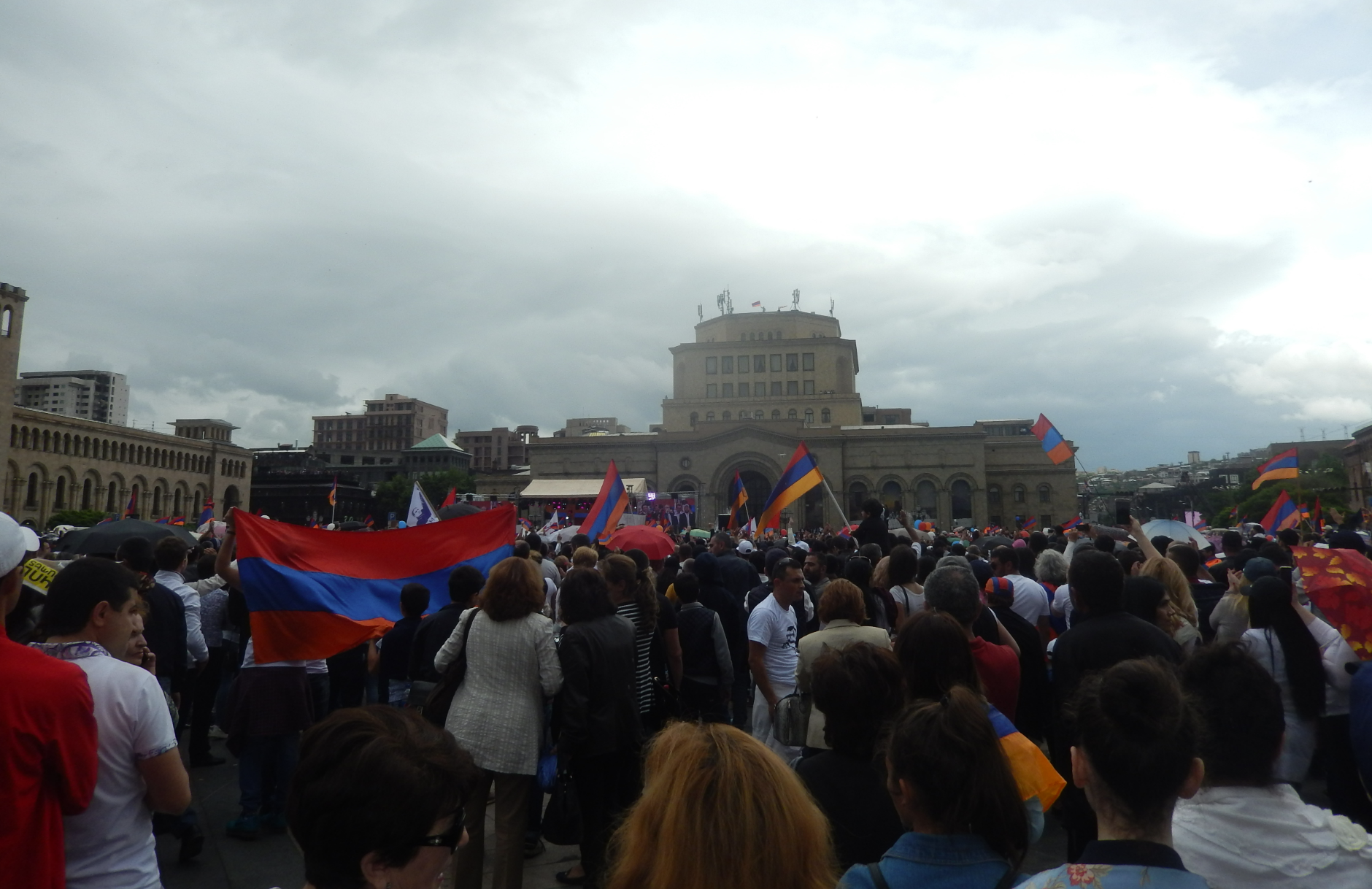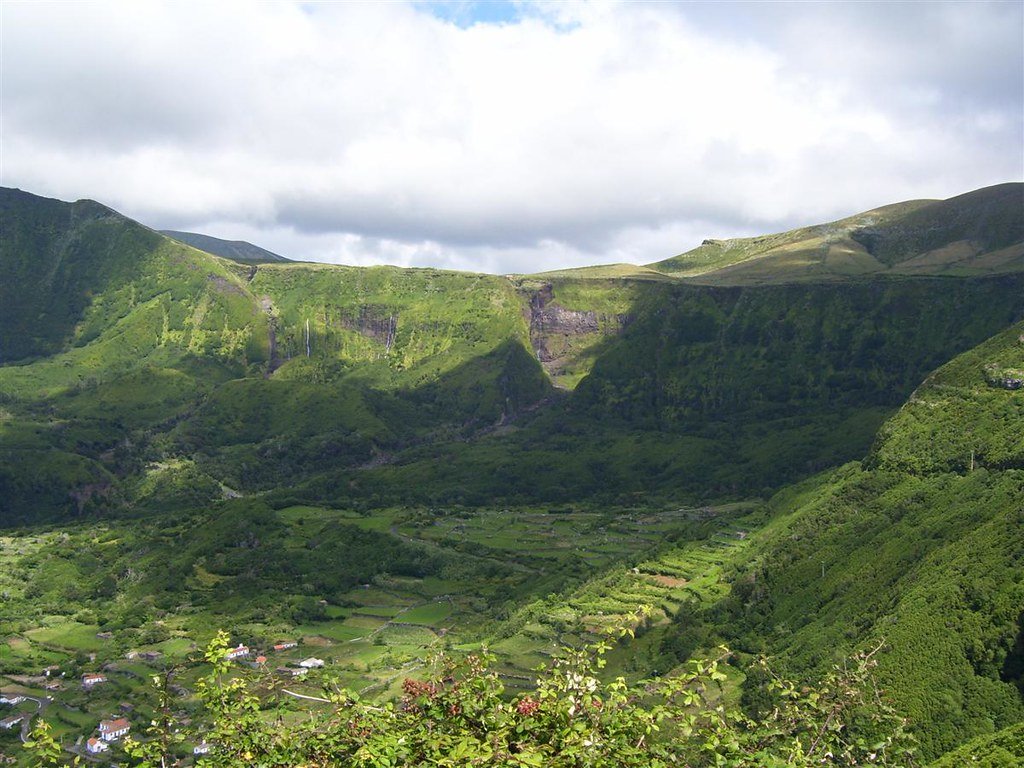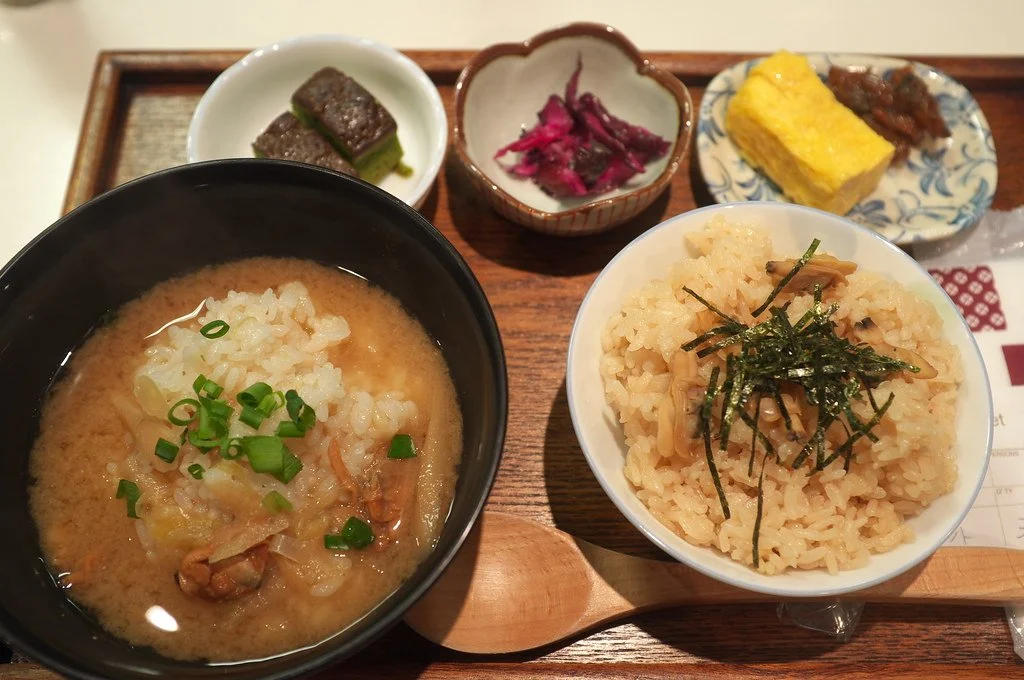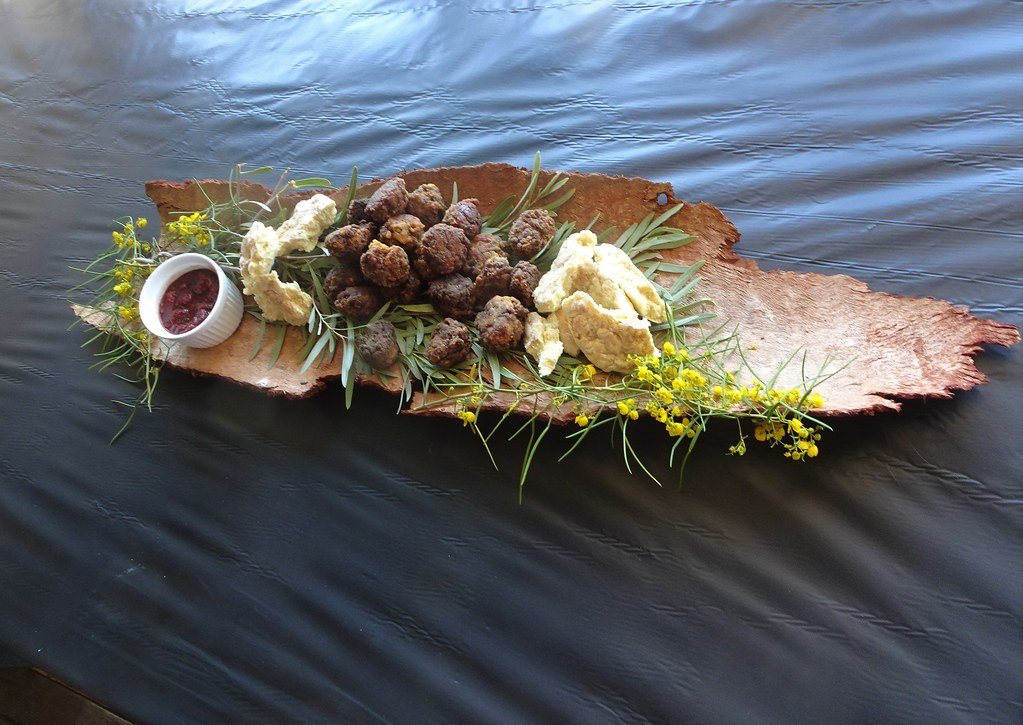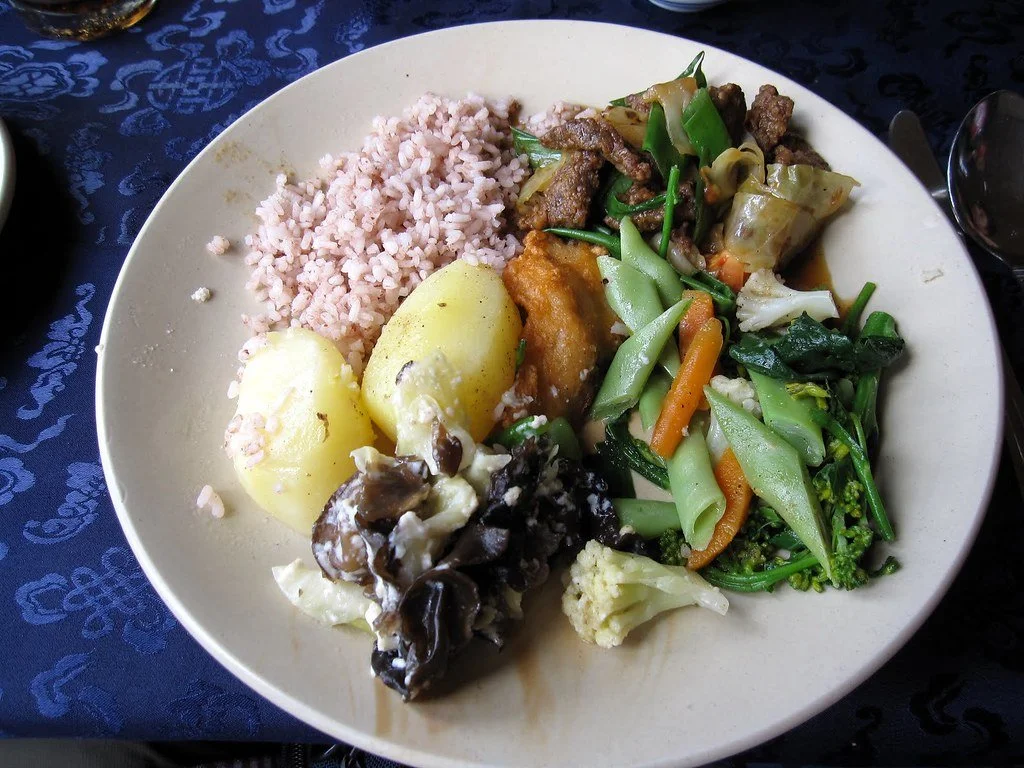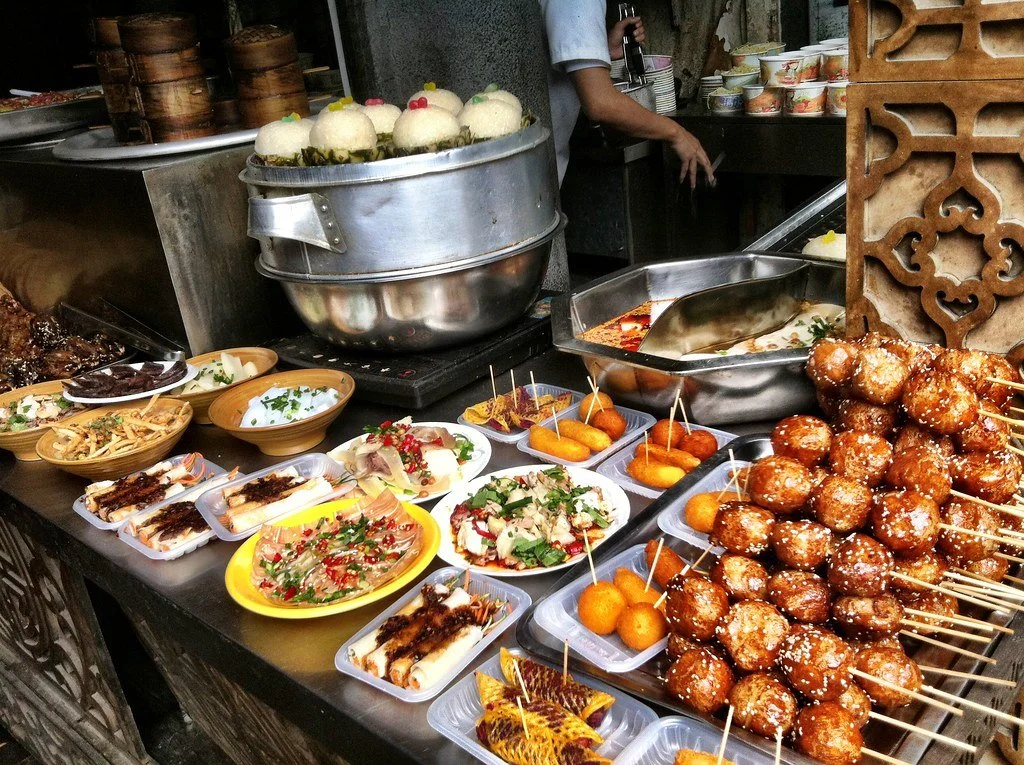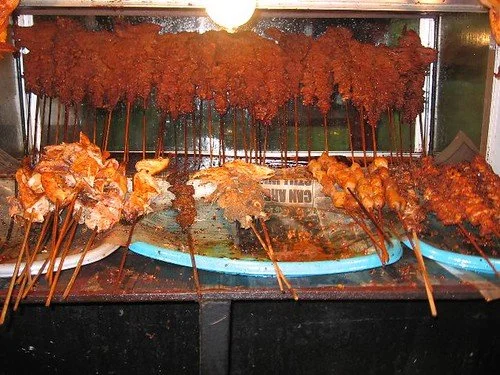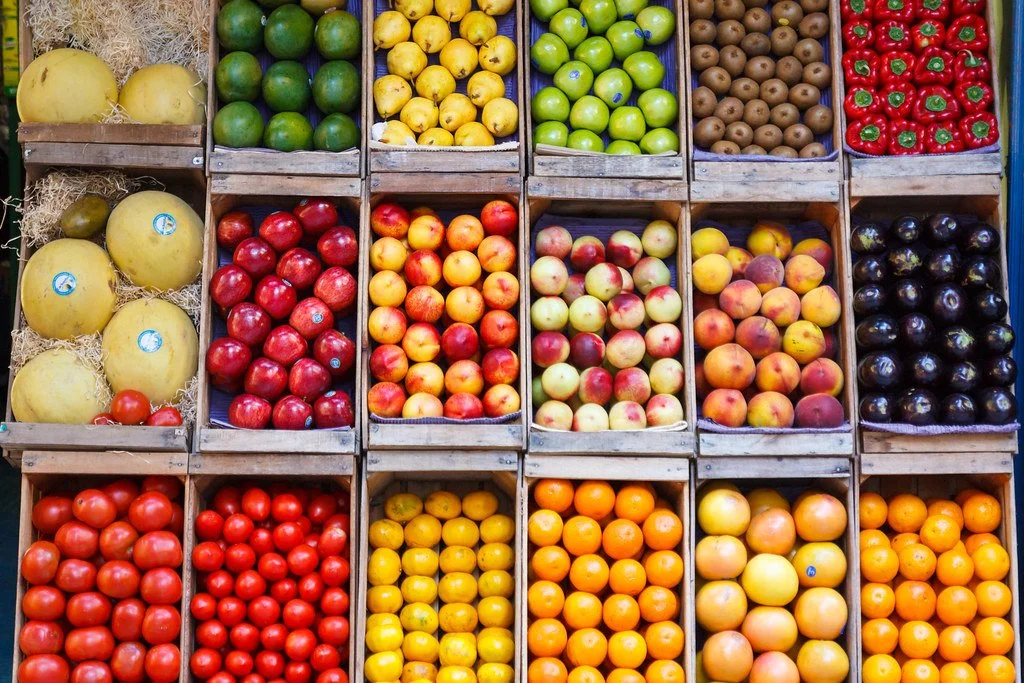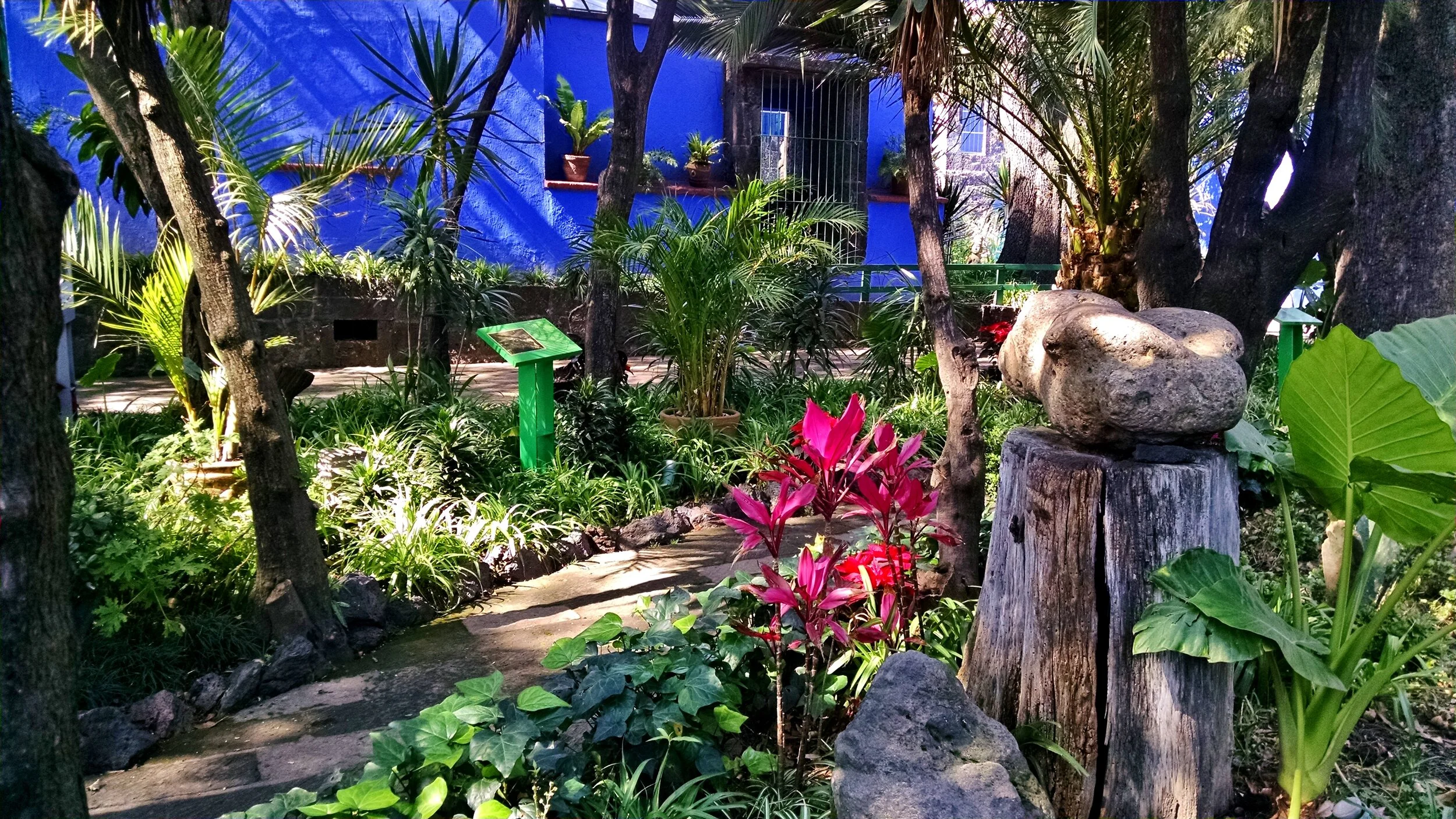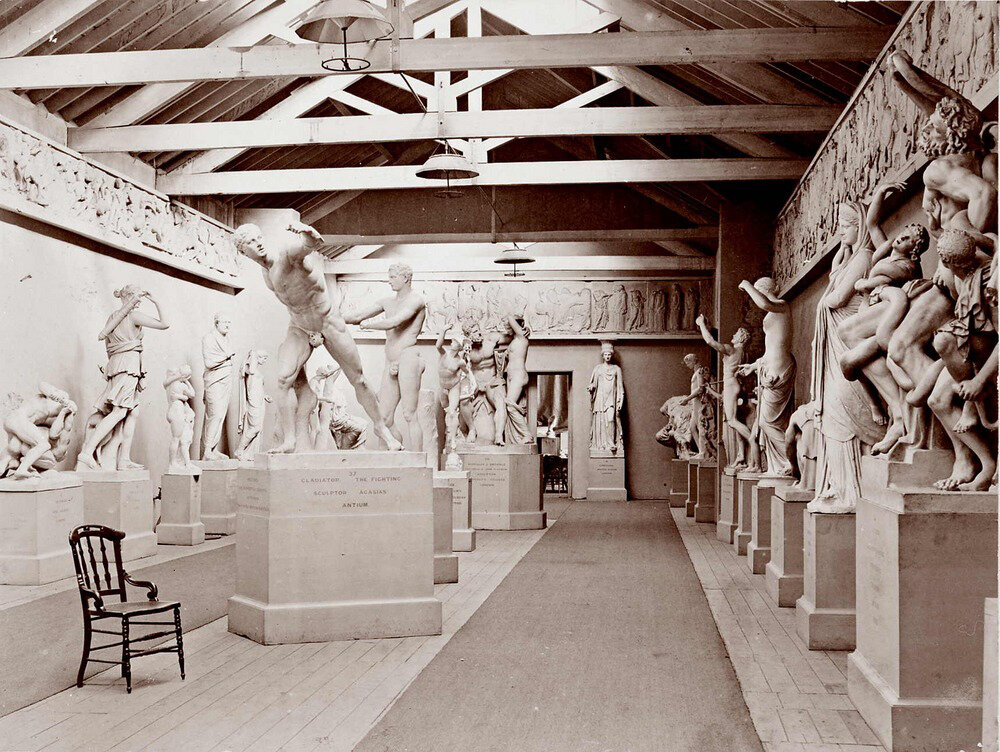Despite facing prejudice and skepticism, these intrepid women adventurers conquered the world’s toughest terrain.
Read More9 Activist Movements You Might Not Know About
From Australia to Bolivia, social movements are paradigms of collective power and triumphs of the human spirit.
Sudanese Protesters Welcome 'Positive Steps' Taken By Ruling Military Council, demonstrators rally near the military headquarters in Khartoum, Sudan, Monday, April 15, 2019. Omer. Public Domain Mark 1.0
It's easy to brush off textbook knowledge as outdated, but academic theories of social movements can provide a powerful lens to understand the changes happening in the world. The 21st-century witnesses social movements erupting all over the world, led by activists fighting to bring about change. Sociologists categorize social movements as a form of collective behavior that emerges during the political, cultural, or economic upheaval. It is precisely this decentralization that gives activists immense power to effect change, leading the masses in protest against the upper crust. With that in mind, below is a list of nine groundbreaking social movements of the 21st century that you might have missed.
1. Equality Australia, Australia
Reason Party (Australia) supporters with placards at Yes Marriage Equality rally Sydney Town Hall 10 Sept 2017.Robert.CC BY-SA 4.0.
Despite progress in other western countries, Australia still faces criticism for a dearth of LGPTQ representation in politics. For example, in 2021, the Australian government under Scott Morrison almost passed a deceptively named religious discrimination bill that in reality had the potential to legalize discrimination based on sex, disability, and age under the disguise of religious freedom. This bill not only undermines the rights of the LGBTQ community but also perpetuates stereotypes and biases. The bill was shelved after religious lobby groups withdrew support and, due to Scott Morrison’s defeat to the Australian Labor Party in 2022, seems unlikely to be reintroduced.
To compensate for the lack of legal protection for the sexual minority population, Equality Australia, an organization dedicated to improving the lives and circumstances of the LGBTQ community in Australia, has launched multiple initiatives. It tackles the pressing issues that gay, trans and queer Australians face, from being able to freely express their identity to receiving adequate healthcare and support.
2. “Great March of Return” Protests, Palestine
Child survivors of Israeli massacres gather on the Gaza beach to finish an incomplete match.Catron.CC BY-NC 2.0.
In the Gaza Strip, a Palestinian exclave on the eastern coast of the Mediterranean Sea, 70% of the population are refugees suffering from the blockade by the Israeli military occupation. Essential needs like electricity, sanitation, and healthcare are a luxury for these refugees, who live constantly under the shadow of military clashes between Hamas and Israel.
The Great March of Return demonstrations (GMR), which began on March 30, 2018, brought a glimmer of hope to the Palestinian refugees in the Gaza Strip. The GMR was a call to end the Israeli blockade and the right of return for Palestinian refugees through non-violent protest at the Gaza border.
But while most refugees marched peacefully, Israeli forces have taken a brutal toll, killing at least 210 Palestinians and injuring over 18,000 since 2018, according to Gaza health officials. The aftermath of these marches has left many with life-long physical and psychological scars from generation to generation. A staggering 80% of all children treated by the United Nations Relief and Works Agency for Palestine Refugees in the Near East were injured by gunshot wounds. In contrast to the aggressive response from Israel, the largely nonviolent Great March of Return “restored credence to the concept of peaceful struggle”, according to Palestinian journalist and peace activist Ahmed Abu Artema.
3. EndSARS, Nigeria
Protesters at the endSARS protest in Lagos, Nigeria 92. CC BY-SA 4.0.
Nigeria's history of police brutality and unjust criminal investigations reached a boiling point in 2020 when the world was shocked by a viral video of two men being dragged out of a hotel and shot by members of the Special Anti-Robbery Squad (SARS). Despite being established in 1992 to arrest and prosecute those involved in violent crimes, SARS quickly became known for its human rights violations, including arbitrary detention, torture, extortion, and murder.
As the hashtag “EndSARS” quickly spread across social media, fueled by the support of high-profile celebrities like footballer Marcus Rashford and actor John Boyega, the movement transitioned from an online trend to a physical reality. Peaceful protests erupted in cities across Nigeria, from capital Abuja to metropolis Lagos, and in major centers like Ibadan and Osun, as the people took to the streets to demand an end to the police brutality and human rights violations. Though the Nigerian authorities made empty promises to disband SARS, the movement continues to fight for justice and accountability to this day.
4. India's Farmer Protest, India
Protests outside Odisha Bhawan New Delhi. Brick. CC BY-NC-SA 2.0.
In September 2020, as the pandemic and economic woes plagued the country, the Indian government passed three farm acts that many farmers regard as a breakdown of the existing, stable relationship with agricultural small businessmen.
The farmers were furious and took to the streets, shutting down railways, taking over highways, and protesting en masse in Delhi, Punjab, Haryana, and Western Uttar Pradesh to demand change. On Nov 26, 2020, millions struck in Delhi, calling for a change in labor laws, but were met with violence and teargas. The protests coincided with the Covid outbreak, leading some to view the government's social distancing requirement as a conspiracy to shut down its critics.
After ten rounds of talks, the government agreed to grant farmers’ unions a rare concession in January 2021, with the Prime Minister allowing the repeal of the controversial reform due to public pressure. The Indian farmer protest highlighted the deep frustration with the government's handling of the agriculture sector, which 60% of rural households depend on for their livelihoods.
5. Subway Fare Protests, Chile
Students take part in violent Protests in Santiago de Chile. C64-92. CC BY 2.0.
In Chile, a tiny $0.0 was all it took to ignite social upheaval in 2019. What started as a protest over a 30 peso, equivalent to $0.04, exposed the massive wealth inequality in the country, where the per capita income of the bottom quintile is $140 a month.
During the height of the protests, high school students started to overrun the turnstiles, using the hashtag “Mass Evasion” on social media to encourage others to join the cause. The young protesters soon joined in mass demonstrations by many other Chileans who are frustrated with rising living costs, low wages, and an inadequate education system.
The protests and counterforce led to the death of at least 18 civilians, the burndown of 21 metro stations, and the destruction of several trains, buses, and buildings, including 200 supermarkets. Eventually Chile’s militarized national police managed to suppress the October riots, but the protests and their aftermath shed light on the ongoing fight against wealth inequality in Chile.
6. Velvet Revolution, Armenia
Velvet Revolution in Armenia. Armineaghayan.CC BY-SA 4.0.
The Velvet Revolution, otherwise known as the “Reject Serzh” civic initiative, is the archetype of a social movement that succeeded in overthrowing an entire regime without a single bullet fired. In 2018, the protest called for the removal of former President Serzh Sargsyan from his third consecutive term. Sargsyan took office as president in 2008, following a violent suppression of anti-government protests in which at least 10 people were killed. A youth movement was established soon after, contributing to the formation of current Prime Minister Nikol Pashinyan’s Civil Contract party.
This peaceful protest was politically motivated, with support from human rights advocates, journalists, and information organizations. The demonstration started on March 18, 2018 when Pashinyan began his protest walk in Gyumri. It reached the peak when over 250,000 protesters gathered in Republic Square for the largest demonstration in Armenia's post-Soviet independence period. The movement was able to unite all Armenians regardless of political views and sparked hope for a lasting democratic government.
7. “Slipper uprising”, Belarus
Protests in Minsk, Belarus. Shnipelson. CC0 1.0.
The “Slipper Uprising” broke out in Belarus in 2021, as protesters used the simple yet powerful symbol of a slipper to push for change. The series of protests followed a controversial presidential election that declared Alexander Lukashenko, the incumbent Belarusian President, as the winner.
The call, “stop the cockroach” came from popular blogger Sergei Tikhanovsky's video, in which an elderly woman compared Lukashenko to the main character of the children’s poem “The Mighty Cockroach.” This nickname, combined with opposition supporters’ demand for Lukashenko's resignation, fueled mass protests in the streets.
Demonstrators showed their defiance against Lukashenko’s rule by waving slippers high in the air. Over 360 people were taken into custody for protesting in just one weekend, but the fire of dissent continued to burn. The “Slipper uprising” proved that even the simplest of symbols can be a catalyst for change.
8. Wildfire protest, Bolivia
March in favor of Evo Morales. Santiago Sito.CC BY-NC-ND 2.0.
The heat is on in Bolivia as hundreds of thousands of protesters took to the streets to voice their outrage over President Evo Morales’ government's response to the wildfires that ravaged the country’s forests in October 2019.
Many of the protesters were residents of Santa Cruz, Bolivia's largest city and home to vast areas of the biodiverse Chiquitano dry forests. Protesters called for a “punishment vote” against Morales in the upcoming presidential election. The rallies have drawn massive crowds, with an estimated 350,000 people marching through Santa Cruz in late October, according to reporting from Reuters. The growing public anger and frustration highlight the urgent need for action to address environmental justice and protect the country's precious forests.
9. “Million-man March”, Sudan
Demonstrators hold placards against the Khartoum regime, April 28, 2013. Sari Omer. Public Domain Mark 1.0.
Sudan’s "Marches of the Millions" was a massive demonstration held in the capital city of Khartoum on June 30, 2019. The nationwide protests were orchestrated by the Sudanese Professional Association (SPA), an influential activist coalition. The protesters had six demands, including a swift transfer of power to a civilian government and aid to the victims of government-initiated attacks.
The nationwide protest also exposed the danger of police crackdown, as national security agencies used violent tactics, such as teargas, to confront the marching citizens. Despite the violence, the protest movement continued, leading to the agreement between the military and its opposition in August 2019. The agreement marked the first step towards a democratic transition for Sudan.
From trending hashtags and posts that amplify the voice of activism on social media, to throngs of individuals marching in the streets and rallying for a shared goal, social movements embody the spirit of resistance against oppression and tyranny. It is through the eruptive energy of collective action that humans can truly exhibit their strength and determination in the face of injustice.
Hope Zhu
Hope is a Chinese international student at Wake Forest University in North Carolina studying sociology, statistics, and journalism. She dreams of traveling around the globe as a freelance reporter while touching on a wide range of social issues from education inequality to cultural diversity. Passionate about environmental issues and learning about other cultures, she is eager to explore the globe. In her free time, she enjoys cooking Asian cuisine, reading, and theater.
8 Ways to Get Started with Activism
A guide to making social changes through small steps.
Climate protests. Unplash
Many of us care deeply about social causes and would like to get involved in activism, but struggle to take the first step. Maybe we fear the time commitment and have other pressing responsibilities with work, family or friends. Or maybe it’s just intimidating. Here are eight ways to get started as a part-time activist. They are all relatively easy and a great way to, as Gandhi said, “be the change you want to see in the world.”
1. Commit Yourself to Learning
The simplest and most overlooked step to becoming an activist is learning. Through consuming media that promotes or educates on social causes, you can discover a cause you’re passionate about, find an activist group whose mission speaks to you, and learn about the people, animals, countries, social groups, and environment that you want to advocate for. Read nonfiction books, research online media such as journals, websites and podcasts, or even just explore social media accounts by searching through hashtags. This is the first step.
2. Donate
Realistically, economic activism is the bread and butter that allows activist groups to create change, so donating to a cause you’ve researched can make all the difference. More funding and economic investment usually means more social impact, although the relationship is not always linear. Funding keeps activists paid, operations smooth, and costs of office space covered and can also add credibility to a nonprofit's cause.
3. Volunteer
If you can’t make a monetary investment to social activist groups, make a physical investment. Many hands make light work, and volunteering is a perfect outlet that doesn’t require a large time commitment or an official position. Much like donations, the more volunteers an organization has, the greater its potential impact. Volunteering also has the unique benefit of uniting people that are passionate about the same cause, and so can create a strong sense of community around an issue.
4. Vote
Some consider voting a civic responsibility. D.H. Parks. CC BY-NC 2.0
Political theorists may argue civic responsibility, but for many activist groups voting is also a way to express satisfaction or dissent for policies that affect their missions. Voting can mean giving a voice to the causes of social activist groups. Activists vote even if they are not convinced of the power of their individual voices, because social activism derives power from a collective voice. Even a small number of votes can be the difference between starkly different policies.
5. Writing Letters of Dissent
Expressing disagreement with the policy of a company, the politics of a government official, or legislation in general, helps put public opinion in the forefront. Writing on behalf of a particular activist group or a general social action mission can better express the anguish or anger felt toward a particular policy. A letter can contribute to a general dissent toward a policy which could, then, lead to revisions in legislation and corporate actions that threaten the activists’ goals.
6. Political Activism
Find a political candidate, whether local or national, whose mission and policies align with your own beliefs and advocate for their voice with your own. Helping a political candidate share their message might involve volunteering for a voter drive, canvassing for the candidate in your neighborhood to support their campaign or increase grassroots fundraising, or conducting phone calls to personalize the policies of the candidate to their constituents. Through political activism you can promote a candidate whose policies will truly make a difference in your life, your community and beyond.
7. Passive Activism: Petitions and Social Media
Passive activism often means supporting a cause through signing online petitions or using social media to like, post or repost, hashtag, or comment on a post that advocates for social change. While critics deride this form of advocacy as the easiest and, consequently, laziest form of activism, passive activism can build exposure and boost viewership for nonprofits, activists, and candidates. And it's how many more “active” activists get their start.
8. Protests
Amnesty International’s Refugee Day Rally against Britain’s asylum policy. Lewishamdreamer. CC BY-NC 2.0
Before any part-time activist can protest, they need to find a protest relevant to their desired cause and in a not-too-distant location. You can find local protests through the social media platforms of your city’s local government and more specific organizations. The Twitter and Facebook pages of activists and nonprofits in particular can serve as the social media catalysts for protest. Finding a protest also means checking up on the websites of your favorite activist groups under an “Events” tab, where such groups typically post protest dates and locations for protests. Some local governments even have protest calendars on their websites.
Nonprofits and Activist Organizations to Donate to or Volunteer for:
Climate Change
Sustainable Harvest International: Addresses climate, biodiversity, forest and soil restoration and human health in relation to the environment
Environmental Defense Fund: Addresses climate, energy, ecosystem, ocean, and health issues in relation to the environment
Sunrise Movement: Youth political action organization whose mission is to stop climate change and create jobs
Extinction Rebellion: Global pro-environment movement that uses nonviolent civil disobedience to compel government action on climate change and environmental protection
Human Rights
International Rescue Committee: Uses donations to fund global humanitarian aid
Amnesty International: UK-based global movement to end abuses of human rights
World Central Kitchen: Provides meals on the frontlines of humanitarian, climate, and community crises
Racial Justice
National Association for the Advancement of Colored People (NAACP): Promotes civil rights and advocates for Black voices to end race-based discrimination
Black Lives Matter: A global organization dedicated to ending violence against Black people and racial injustice, and promoting the prosperity of Black communities
Women’s Issues
The Rape, Abuse, and Incest National Network: Anti-sexual violence organization that provides victim services, raises awareness about sexual violence and works to achieve justice for survivors
Malala Fund: International nonprofit that fights for girls’ education by investing in education activists and holding global leaders accountable
Global Health
Doctors Without Borders: Mostly donation-based medical humanitarian project dedicated to caring globally for communities in danger
Partners in Health: International nonprofit that partners with local governments to bring medical care to poor areas
LGBTQ+ Rights
The Trevor Project: Provides and utilizes crisis services, peer support, LGBTQ activism, research, and public education efforts to end suicide for LGBTQ youth.
Ali Forney Center: Offers services like job readiness training, support, and shelter for homeless LGBTQ in New York to protect them from the dangers of homelessness
Veteran
Wounded Warrior Project: Provides programs and services to injured veterans, including mental health care, rehabilitative care and career counseling
Su Ertekin-Taner
Su is a first year student at Columbia University majoring in creative writing. Her love for the power of words and her connection to her Turkish roots spills into her satire, flash fiction, and journalistic pieces among other genres. Su hopes to continue writing fearless journalism, untold stories, and prose inspired by her surroundings.
14 Social Action Quotes to Motivate Your Activism
These are rough times to be an activist. With bigotry, nationalism, inequality, nihilism, and apathy on the rise, it's hard not to become fatalistic or disillusioned. But this is not the first dark time in history, and we are not the first activists to feel as if we're on the back foot. The great dissidents, resisters, freedom fighters, and iconoclasts of the past all faced dark times, and many of them left behind tips, suggestions, and guides for holding up a light against the enveloping dark.
Below are 14 quotes from great thinkers, writers, activists, and dissidents that will help inspire you through these dark times, and will get you thinking about what being an activist — and a human — really means.
"To do good, you actually have to do something." — Yvon Chouinard
Yvon Chouinard is perhaps best known today as the founder of the company Patagonia. Chouinard, who was a rock climber and an alpinist in his early years, has long been a supporter of environmentalist causes, and he has made an effort in his life to reconcile running a sound, profitable business, while also functioning sustainably. For 2016’s Black Friday Patagonia pledged every cent it earned on the notorious shopping day to grassroots environmentalist groups. As a result, the store earned $10 million dollars — nearly five times what they expected to make. Chouinard has since donated the entire company to a trust, which will siphon all profits to environmental causes.
"You cannot take what you have not given, and you must give yourself. You cannot buy the Revolution. You cannot make the Revolution. You can only be the Revolution. It is in your spirit, or it is nowhere." — Ursula K. LeGuin, The Dispossessed
Ursula K. LeGuin was one of this century’s great writers. She's best known for her science fiction and fantasy, which often carry themes about social justice, feminism, Taoism, and environmentalism. The Dispossessed is about a scientist named Shevek who lives on a planet inhabited by anarchists, and who comes to a nearby planet, not unlike ours, to try and foster communication with the scientists of that world. The downtrodden of the new planet, though, want him to lead a revolution — and Shevek knows that revolutions are not conducted from on high, but instead are lived.
"A step backward, after making a wrong turn, is a step in the right direction." — Kurt Vonnegut, Player Piano
Kurt Vonnegut was one of the best writers of the counterculture era. His gentle humanism never kept him from becoming overtly political, though: Vonnegut was a tireless advocate of the dignity of all human beings and fought for the freedom of speech throughout his life. Vonnegut, an atheist humanist, (a "freethinker," as he called it), often said his favorite speech was Jesus's Sermon on the Mount. This quote, from his first book, is a valuable reminder to anyone feeling frustrated by perceived regression. Steps back are fine, as long as we learn from them.
"If you wish to understand evil, you must understand the bark, the roots, the worms of the earth… Aphid eats leaf. Ladybud eats aphid. Soil absorbs dead ladybug. Plant feeds upon soil… Is Aphid evil? Is ladybug evil? Is soil evil? Where is evil in all the wood?" — Alan Moore, Swamp Thing
Alan Moore is the greatest comics writer of all time. You probably know him for V for Vendetta and his antihero's Guy Fawkes mask, which has since become an emblem of the Anonymous and Occupy movements. In Swamp Thing, one of his lesser-known works, he takes the old, two-dimensional, B-movie character of the Swamp Thing, and turns it into a tale about the nature of good and evil. Eventually, the title character has to ask -- is there such a thing as real evil? And if so, can it ever truly be defeated? It should be a welcome parable in these divided times.
"Stand up all victims of oppression
For the tyrants fear your might
Don't cling so hard to your possessions
For you have nothing if you have no rights
Let racist ignorance be ended
For respect makes the empires fall
Freedom is merely privilege extended
Unless enjoyed by one and all."
-Billy Bragg, The Internationale
The Internationale has been the anthem of the left wing since the late 19th century and is often associated with Soviet-style communism. But in 1989, as the Soviet Union collapsed, and the left began to redefine itself, folk legend Pete Seeger approached rocker Billy Bragg and asked him to rewrite the song's antiquated lyrics. Bragg's rendition puts less emphasis on war and violent overthrow, and more emphasis on human dignity, respect, and pacifism in the face of the dehumanizing forces of hate.
"Fairy tales are more than true: not because they tell us that dragons exist, but because they tell us that dragons can be beaten."
-Neil Gaiman, Coraline
Neil Gaiman is one of the most beloved fantasy writers of our time. This quote is Gaiman's riff on a similar G.K. Chesterton quote, but it is important because it reminds us that our strength can come from the stories we tell.
"If you want to make peace with your enemy, you have to work with your enemy. Then he becomes your partner."
— Nelson Mandela
When anti-apartheid leader Nelson Mandela was released from prison after 27 years, he had every opportunity to lead a violent overthrow of the white supremacist government. He could have taken power and purged his enemies. But instead, he chose to advocate for reconciliation and reconstruction. He died in 2013, but he will always be remembered by history as one of those rare people who were offered great power, but declined it in the name of the greater good.
"Service to others is the rent you pay for your room here on earth." — Muhammad Ali
Muhammad Ali was one of the greatest athletes of all time. As a boxer, his dominance in the ring has rarely been matched. But perhaps more remarkable was his willingness to stand up for his ideals, even at his own expense. Because of his refusal to fight in the Vietnam War, he was suspended from boxing for three of his most prime years. After a triumphant return in which he (again) became the Heavyweight Champion of the World, Ali retired and spent the rest of his days as an activist. He died earlier in 2016, and is remembered as one of the most iconic Americans of the 20th century.
"It's the questions we can't answer that teach us the most. They teach us how to think. If you give a man an answer, all he gains is a little fact. But give him a question and he'll look for his own answers." — Patrick Rothfuss, The Wise Man's Fear
The Kingkiller Chronicle is a fantasy trilogy about an adventurous wizard who has been orphaned at an early age and is attending a wizarding school. Yes, it sounds like Harry Potter, but it's just as good, and slightly more adult. This quote, from the second book of the trilogy (and the latest released) should be tattooed on the palm of every activist who has spent time searching for answers that they never find. Life is an exploration, and activists explore some of the darkest questions humanity has ever been confronted with. It's important to step back every now and again and recognize that the search alone has value.
"There are occasions when it pays better to fight and be beaten than not to fight at all."— George Orwell, Homage to Catalonia
As a young writer, Eric Blair (better known as George Orwell) traveled to Spain to cover the civil war that sprung out of Francisco Franco's fascist attempt to overthrow the country's Republican government. He ended up putting down his pen and picking up a gun. Orwell was eventually shot in the neck by a sniper, and then, for the crime of speaking out against the Stalinists who were undermining the other freedom fighters, was driven out of Spain altogether. That Civil War was lost, and Franco would rule Spain until his death in 1975. Orwell, however, never regretted standing up against brutality and repression.
"It could be worth bearing in mind that, if you really care about a serious cause or a deep subject, you may have to be prepared to be boring about it." — Christopher Hitchens, Letters to a Young Contrarian
Christopher Hitchens was one of the late 20th century's great writers and polemicists. He spent his early life speaking out against authoritarianism in all its forms, even when people began to get a little exhausted of hearing him talk. In the 21st century, he would turn his ire towards all organized religion, and he strangely left behind socialist roots and supported the war in Iraq. His life remains hard to pin down politically -- he frequently flirted with misogyny and Islamophobia -- but his 2001 book, Letters to a Young Contrarian remains a valuable guidebook for any freethinker and iconoclast.
"I do disagree with [the Quakers] over their slogan, 'speaking truth to power.' First of all, power already knows the truth… it's a waste of time. Furthermore, it's the wrong audience. You have to speak truth to the people who will dismantle, overthrow, and constrain power. Furthermore, I don't like the phrase, 'speak truth to.' We don't know the truth. At least I don't. We should join with the kind of people who are willing to commit themselves to overthrow power and listen to them. They often know a lot more than we do." — Noam Chomsky
Noam Chomsky made his name first as a pioneering linguist, but became truly famous as one of the most eloquent, intelligent political dissidents of his age. The breadth of his writings is truly staggering, and he's still churning out work at age 94. The granddad of the left is always controversial but even more thoughtful.
"No people goes down until their women are weak and dishonored." — Sioux saying, from A People's History of the United States
A People's History of the United States should be required reading -- most of us got one version of American history in high school, but Howard Zinn gives us the other version. He documents the lives of the poor, the marginalized, the downtrodden, and all the people who would otherwise have been forgotten by history. In his chapter on the lives of women in early America, he quotes the Sioux puberty ritual, which was designed to elevate women and hold them in communal respect. In an age where there's a resurgence in misogyny and violence against women, it's a valuable thing to remember: women hold up half the sky.
"There are more things in heaven and earth, Horatio, than are dreamt of in your philosophy." — William Shakespeare, Hamlet
The Bard's greatest play features one of the Bard's greatest lines -- you know, aside from "To be or not to be." This line, spoken to the learned Horatio by the hero Hamlet, is one of the greatest calls for humility in the face of the mysteries of the universe in literary history. As activists, we act on our convictions, and it can be easy to forget that our convictions -- well, they may be wrong. Humility and a willingness to learn are one of the most valuable tools an activist can have in her utility belt.
Matt Hershberger
Matt is a writer and blogger who focuses on travel, culture, politics, and global citizenship. His hobbies include scotch consumption, profanity, and human rights activism. He lives in New Jersey with his wife and his Kindle. You can check out his work at the Matador Network, or over at his website.
Where To Next? 20 Best Spots to Travel In 2023
From up-and-coming travel destinations like Rwanda to the otherworldly landscapes of Namibia, here’s the CATALYST list of the best places to travel in 2023.
Read MoreUnexpected Paradise: 6 Macaronesian Islands That You May Not Have Heard Of
Off the coast of Europe and Africa, the Macronesian islands offer unspoiled landscapes, quaint towns, and stunning coastlines.
The island of La Gomera is located in the Canary Islands, one of the island chains that make up Macaronesia. Jörg Bergmann. CC BY-NC-ND 2.0.
Macaronesia is a group of archipelagos in the North Atlantic Ocean. off the coast of Europe and Africa. It consists of the islands of the Azores and Madeira, (part of Portugal) the Canary Islands (part of Spain) and Cabo Verde (an independent group of islands formerly controlled by Portugal). Some of these islands are only a short flight away from many major cities in Western Europe and becoming more popular, leading to more development on some of them, but unspoiled wilderness remains prevalent.
1. São Miguel, Azores
The Lagoa das Sete Cidades features colorful lakes in the remnants of volcano calderas on São Miguel. energeticspell. CC BY-NC 2.0.
The largest island in the Azores, São Miguel features numerous beautiful natural sights for hikers and/or tourists. Due to minerals in the water, the lakes on the island come in various tints of green and blue. At a more temperate climate than many of the other Macaronesian islands, São Miguel receives more rain, resulting in many waterfalls on the island. Some companies lead rappelling excursions at the waterfalls. The seas around São Miguel are also prime for whale watching.
2. Flores, Azores
Lush, green cliffs characterize the island of Flores in the Azores archipelago. Paulo Corceiro. CC BY-ND 2.0.
One of the more remote islands in the Azores archipelago, Flores literally translates to “flowers” in English. Its stunning lush mountains are well-suited for hiking and canyoneering, with trails leading to some unique geological formations. Some places on the island to visit include the village of Fajã Grande, which is tucked in between cliffs and the Atlantic Ocean, and the 7 lagoons, the remnants of ancient volcanoes.
3. Madeira
The cliffs of Madeira. Kacper Gunia. CC BY-NC 2.0.
After a thrilling landing at one of the most challenging airports for pilots in the world, visitors step into a green oasis with dramatic mountains and steep drop-offs. In the past, Madeira was a maritime center with Christopher Columbus and James Cook making stops there on their voyages. Later, rich landowners built ornate summer estates on the island, such as the Monte Palace Madeira, which is a present-day vast botanical garden. Hiking trails criss-cross the island, with many built on the remnants of levandas, irrigation canals used to feed water to drier areas of the island. A strenuous hike to Pico Ruivo, the highest point on the island, rewards intrepid hikers with vast views.
4. La Palma, Canary Islands
The volcanic landscape of the island of La Palma. weberpal. CC BY-NC-SA 2.0.
The island of La Palma in the Canary Islands is fully operational again after the Cumbre Vieja volcano stopped erupting in December 2021. While it is still advisable to exercise caution around the eruption area, the rest of the island is free to be explored. Past volcanic eruptions have created unique rock formations underwater, making diving a popular activity off the coast of the island. Watersports such as kayaking and canoeing are also popular, especially along the sheltered coast of Fuencaliente. There is also an extensive network of hiking paths on the island, leading to a variety of unique landscapes.
5. Fuerteventura
Popular beaches and desert landscapes combine on the island of Fuerteventura. xavipat. CC BY-NC-ND 2.0.
The more southern islands of Macaronesia have a more arid climate, leading to more desert-like landscapes. Less than 100 kilometers from the coast of Africa, Fuerteventura consists of many popular beaches but also has quaint towns and rolling hills. As the first of the Canary Islands to be settled by Europeans, its first capital city of Betancuria was founded in 1404 and remains to this day and is a great place to learn about the island’s pre-Hispanic history. The island is also famous for its cuisine featuring majorero cheese and papas arugás with mojo (wrinkly potatoes with a local sauce).
6. Sal, Cabo Verde
The barren landscape of Sal is much more than what it seems. Phil Thirkell. CC BY-NC 2.0.
Another desert-like island, Sal is located in the northeast of the Cabo Verde archipelago and used to be the least populous island of the country until recent developments that have caused rapid growth. Like Fuerteventura, Sal has many beaches which are known as prime kiteboarding areas. Away from the beaches and resort areas lies what seems like a barren landscape, but tours on jeep and horseback can bring visitors to the remote interior to secluded areas. The island also has a legacy of salt mining, and it is possible to visit the Pedra de Lume area, which preserves the remnants of salt extraction operations.
Bryan Fok
Bryan is currently a History and Global Affairs major at the University of Notre Dame. He aims to apply the notion of Integral Human Development as a framework for analyzing global issues. He enjoys hiking and visiting national parks.
7 Sites of Mexico City’s Architectural Diversity, from Baroque to Brutalist
Mexico City is a flourishing metropolis with a plethora of historic and modernist architectural sites. Here are a few attractions scattered around the city.
Read More12 Local Cuisines You Can Find Around the World
Tasting local foods is one of the most interesting things about travel. Learn about some hallmark culinary traditions of these diverse regions.
Meat and veggies simmering in a pan. LoKan Sardari. CC BY-NC-SA 2.0.
My favorite part of traveling is exploring and tasting local food dishes with culturally significant roots within the region I’m visiting. When I traveled to London, I explored the local pubs and decided fried fish wasn’t that bad. The local aspect of dishes excites me, and I would much rather dine in a family-owned restaurant than a tourist trap.
This serves as a bite-sized serving of the infinite variety of food on this massive planet—not a definitive recounting of the delicious and culturally significant dishes on Earth, but rather these regions serve as starting points that lead to culinary exploration.
1. Kanto Region - Japan
Fukagawa meshi and other side dishes. Nekotank. CC BY-ND 2.0.
Japan is divided into eight regions, each of which has its own culturally significant dishes. The Kanto region is home to the capital city of Tokyo, and the flavors are stronger than the other regions’ food. Fukagawa meshi is a dish that originated in the Edo period (approximately 1603-1867) and consists of clams and leeks cooked in a miso stew. The dish was a product of abundant fishing in the area and quickly became adopted by locals. The Kanto region became a hub for industry during the Edo period, and the cuisine naturally started evolving to incorporate other region’s influences.
2. New South Wales - Australia
Kangaroo Meatballs with quandom jam. by denisbin. CC BY-ND 2.0.
Prior to the 18th century, the Indigenous population of Australia subsisted on hunting local wildlife, including kangaroos and wallabies. Once Australia became a continent-sized prison for the British Empire, the cuisine quickly modified to have influences of the colonizer diet. Today, Sydney cuisine reflects the multi-cultural population that lives there. Take-away foods and fast food are staples of Australian culture, and Sydney specifically is a melting pot of local and international foods. Fish and thick cut fries are common. The cuisine of Australia is heavily influenced by Western diets but still utilizes ingredients that Aussies connect with, including eating their national animal, the kangaroo—a dish low in fat, delicious, and popular in local restaurants.
3. Phobjikha Valley - Bhutan
Bhutan dish with potatoes and vegetables. By rapidtravelchai. CC BY 2.0.
This region is home to many rich cultural events, such as the Black-Necked Crane Festival, which honors one of the region’s most culturally significant animals. This festival is held annually on Nov. 12, where cranes can be seen flying at high altitudes, accompanied by traditional dancers dressed in black-necked crane attire. The local cash crop is potatoes, which are the main ingredient in kewa datshi, a traditional dish prepared by thinly slicing potatoes and sauteeing with cheese, butter and chiles. The dish is relatively new to the region’s culture; in fact, potato consumption in Bhutan was near non-existent until the 1970s. Until then, it was mainly used as an export crop. Due to the region’s altitude and climate, insects do not interfere with the local’s potato crops, which eliminates the need for harmful pesticides.
4. Metsovo - Greece
Skewered sausages. PACO POMARES. CC BY-NC-SA 2.0.
Situated to the north of Epirus, Greece, this gorgeous small town is home to some of Greece’s most delicious industries: wine and cheese. The history of this town is fascinating, with it being the center of production for sheep wool traded as far as Northern Africa during the 17th and 18th centuries. The region is most popular during the winter season for its spectacular mountains and beautiful streams. Venturing off the beaten path, one can find themselves entranced with gorgeous forests, filled with statues, 19th-century architecture and natural springs supplying fountains. The local cuisine has an emphasis on dishes with rich flavors like sausages and ruffage, as well as a nice glass of wine to pair with it. Extra virgin olive oil is a heavily used condiment that could be added to multitudes of things, including toasted bread and other dishes.
5. Chengdu - China
An assortment of Chengdu Food. sinosplice. CC BY-NC 2.0.
Chengdu, China is a so-called “Party City,” according to the Los Angeles Times. While it is true that Chengdu has more teahouses and bars than Shanghai, it’s also home to many local dishes, specializing in chiles and peppercorns. One dish, dan dan mein (which Chengdu is credited for making), utilizes both in order to achieve a very spicy broth. Chengdu’s local tea culture is also very important, since the city was once a starting point for the Silk Road, offering many opportunities to create and enhance cultural staples. Although not culinary-specific, the city is a hotspot for LGBTQ+ travelers and natives, combining influences from the local party scene and the Queer community.
6. Soca Valley - Slovenia
Panettone with chocolate chips. Nicola since 1972. CC BY 2.0.
Slovenia is right in the center of four surrounding cultural influences; the Balkans, Alpines, Mediterranean and Pannonian flavors are all present in Slovenia’s dishes, and each is broken down into distinct ‘genres’ of food. The Alpine mountains are home to the cows and sheep that graze and produce milk, used for cultural dishes like žganci (literally translated as mash). The expansive meadows let honey bees run rampant to produce fresh honey. To the east of Slovenia, there is a vast amount of wheat fields, used to prepare a litany of different dishes and thermal springs that allow for fresh drinking water. The most popular fish is sea bass, and according to popular sentiment in the region, “a fish must swim three times, in water, oil and wine.” By utilizing hard harvested salt, Slovenia’s population takes its local cuisine very seriously.
7. Cape Town - South Africa
Braai at a meal. Kent Wang. CC BY-SA 2.0.
South Africa’s cuisine can be summed up with the term “melting pot,” since this region contains a mixture of Asian, European and Indigenous cultures within their food. Braai, an almost universally utilized meat preparation method in Southern Africa, is prepared by digging a firepit, providing meat and setting it ablaze. The practice is adjacent to America’s cultural touchstone of “barbecue,” although a key difference is that braai fires stay lit throughout the celebration as participants enjoy everyone’s company. Indigenous populations prioritized beef as a high-value food, and today, many South Africans still utilize foods from their Indigenous past. Colonialism severely altered the landscape of South African cuisine by bringing in an enslaved workforce from across Asia, which in turn brought their own cultural roots. The introduction of spices like nutmeg and allspice and the influence of European culture altered the cuisine further. Fermented beer is also popular, with a common practice being offering someone homemade beer as they enter your house.
8. Sicily - Italy
Italian cassatelle drizzled with chocolate. JohnDiP. CC BY-NC-SA 2.0.
Across the Mediterranean is the island of Sicily, a region known for its famous seafood dishes, sweets and, of course, pasta. The island restaurants have the opportunity to catch fish from the surrounding Mediterranean, specializing in tuna and freshly caught sardines. Pasta con le sarde is one of Sicily’s most popular dishes, utilizing fresh fennel seed that grows abundantly in Italy and the sardines from the surrounding sea. The dish also reflects the region’s multicultural influences, such as including raisins and pine nuts adapted from North American travelers. Sicily’s sweet side is also on full display, with cannoli being a centerpiece in Sicilian culture. Made with sweet ricotta filling, the crust of the cannolis is made from a fried pastry.
9. Andes - South America
Cuy on skewers. Nestor's Blurrylife. CC BY 2.0.
The Andes Mountains are home to communities of Indigenous peoples who have worked to preserve traditional flavors and techniques. The foodstuffs of the Indigenous peoples were incredibly versatile. Corn and potatoes are still some of the most important aspects of Andes cuisine, accompanied by traditionally used meats such as llama and guinea pig. Another word for a guinea pig is “cuy,” which has been a staple in Peruvian culture since the Incas and is used on important occasions.
10. Prague - Czech Republic
The capital of the Czech Republic harbors many cultural influences within its dishes. Italian food has touched the landscape of cuisine in Prague, but there are still many delicious dishes with deep Czech roots. Czech cuisine doesn’t have lots of vegetables in its arsenal of ingredients, and the foods of Prague are “delicious, comforting, very filling and addictive.” Steak tartare, a dish that tops “Taste of Prague’s” list of snacks that pair well with beer, is raw minced beef served with an egg or condiments. Sausages are a very common food in Prague, as well as the greater Czech region, overflowing into Germany.
11. Central Ghana
Western Africa’s recipes are still being prepared in deeply culturally important ways. Dishes are typically very starch heavy, accompanied by heavily seasoned meats, like beef, fish and the most dominant form of red meat in this region, goat. Traditionally, West Africans didn’t eat much meat and instead opted for dishes with natural oils, but now locals mix various meats together in different aspects of dishes. Suya is also a very popular street food, taking meat and mixing it with spices, resembling a kebab flavor on a stick. Prior to Ghana’s independence in 1954, residents boycotted colonial goods, including tinned meat and biscuits, in an effort to lower the cost of living. This action, along with a demonstration at the governor’s estate, set the stage for Ghana to be the first Sub-Saharan independent country. Ghana is not concerned about dictating a national food, rather it embraces the diversity of the many cultural influences within the country.
“Ghanaians expect to encounter diverse ethnic foods when traveling through different ecological zones within their country,” said researcher Brandi Miller in her paper, “Food and Nationalism in Independent Ghana.” “They welcome this difference and consider it a source of national strength and an indication of their unique national character, which embraces diversity.”
12. Tropics - South America
Fruit in a market. Nico Kaiser. CC BY 2.0.
On the beaches of South America, some so-called ‘exotic’ fruits are common staples of local culture. Pineapples, mangos, papayas and dozens others can be found in the tropical forests within the region. The climate allows for a dizzying variety of local agriculture to be used in recipes, such as tostones, which are popular Latin American twice-fried sliced plantains. The Amazon Rainforest is also utilized to enhance local flavors, utilizing meats from turtles and capybaras to use for local cuisine. Nearer to the coast, seafood dishes like ceviche are common to see enjoyed on a sunny day on the beach. Other than fish and fruits, there is a wide variety of vegetables that are grown in the tropics that influence local cuisine, including corn, beans and sweet potatoes.
Clayton Young
Clayton is an aspiring photojournalist with a Bachelor's in Liberal Studies with a minor in History from Indiana University - Bloomington. In his free time, he enjoys hikes, movies, and catching up on the news. He has written extensively on many topics including Japanese incarceration in America during World War II, the history of violence, and anarchist theory.
Travel and Work for Food on Organic Farms
Organic farms look for travelers to help in exchange for housing, meals and an opportunity to learn—providing a unique mode of affordable, ethical travel.
Organic farm in Cyprus, Greece. George M. Groutas. CC BY 2.0.
Worldwide Opportunities on Organic Farms (WWOOF) is the most widespread and popular organization that pairs people interested in volunteering on organic farms throughout the world with host families who run their own organic farms. The idea is that volunteers would be just that: unpaid volunteers, who work part-time on a close-knit and often family-run farm in exchange for free housing and meals with the family. In fact, WWOOF bans any exchange of money between the host and the volunteer. Often, these volunteer stints are short (a few weeks) or part-time, allowing for the volunteer to obtain paid work and/or spend time exploring the area they are living in while also growing the food they will eat during their stay, immersing themselves in culture, helping a local organization and learning from experienced farmers. Below are some detailed opportunities from every continent in the world.
North America: Consecon, Canada
Stonefield Alpaca Farm in Consecon, Canada is a 100-acre family-owned and operated farm powered by solar panels and windmills. The owners are looking for volunteers to help maintain the straw bale home they built together, grow their own food and take care of the animals (alpacas and poultry). They hope to become completely self-sufficient in terms of food, and that volunteers can help them do so while also learning from them and exploring Ontario. Learn more here.
South America: Belize City, Belize
An individual who bought and began his own 14-acre pesticide-free, organic farm in Belize City, Belize offers an opportunity to help develop his farm further in terms of sustainable energy production and other sustainable farming methods. He became a host because he was a WWOOF participant in the past. His farm has goats, monkeys, parrots and sheep. Responsibilities would include taking care of the animals, gardening, landscaping and sharing ideas on how to improve the farm’s organic practices. Learn more here.
Africa: Apam, Ghana
This family-owned farm in Apam, Ghana is not only a farm located on the coast, in the center of a fishing community, but also an educational and charitable center focused on agriculture and helping the larger community. The hosts are looking for volunteers to help with typical farming tasks, such as taking care of animals and harvesting, as well as build ecological houses and participate in the local fishing. This is a unique opportunity to not only help the environment and one local family, but the entire community as well. Learn more here.
Australia: Upper Kangaroo River
Winderong Farm is a cooperation of 10-15 employees and volunteers working together to revive their surrounding environment in Upper Kangaroo River, Australia. They’re looking for volunteers interested in conservation to work on composting, permaculture and regeneration of the Australian bush. This farm differs from most as it is a larger, community-based effort as opposed to a small family-run farm. Learn more here.
Asia: Kampot, Cambodia
Nakupenda Farm in Kampot, Cambodia is a family and community farm focused on sustainability. They are completely sustainable in terms of energy and are working towards growing all of their own food. They would like volunteers to help harvest food and help them reach their goal of becoming entirely self-sufficient. They have also worked on projects in the past such as building earth houses and solar dehydrators, which dry fruits and vegetables to preserve them. Nakupenda Farm sits on 3.5 acres of land. Learn more here.
Passive solar dehydrator. Colleen Taugher. CC BY 2.0.
Europe: Hvolsvöllur, Iceland
The Farm Buland is a certified organic dairy farm run by three generations of one family. They would primarily be looking for help with the cows and other livestock, such as chicken, horses and sheepdogs. The owner is passionate about environmentalism and has studied natural healing and medicine. They have over 50 humanely treated cows, providing an opportunity to work on a large-scale ethical and organic farm. Learn more here.
These are only a few examples of the types of farms looking for volunteers; there are hundreds of local and family-owned farms all over the globe searching for people passionate about agriculture and the environment to help them while learning from their experience. In addition to WWOOF, potential volunteers can find more opportunities through similar organizations like World Packers, as well as through the websites of individual independent farms on the lookout for volunteers, such as Red Hook Farm.
Calliana Leff
Calliana is currently an undergraduate student at Boston University majoring in English and minoring in psychology. She is passionate about sustainability and traveling in an ethical and respectful way. She hopes to continue her writing career and see more of the world after she graduates.
5 Cultures That Acknowledge More Than Two Genders
A close look at these 5 cultures shows the existence of more than two genders has been part of the human experience for thousands of years.
Two-Spirit person at a march. Mia Culpa. CC BY-NC-SA 2.0.
Several societies have understood and sometimes honored genders outside of the binary for hundreds or thousands of years. The way gender is expressed differs between cultures and has been greatly influenced by globalism and colonialism. An exploration into the following five genders demonstrates the complexity of nonbinary genders and their role in society.
Two-Spirit
Two-Spirit banner at a Bay Area Pride Parade. Quinn Dombrowski. CC BY-SA 2.0.
To be Two Spirit is to contain the spirits of both the male and the female in Indigenous North American society. For one person to have both of these perspectives is regarded as a great honor and historically indicated a different role in society in terms of responsibilities and jobs. For example, Two-Spirit people were often entrusted with creating art in the Navajo Nation. While this identity has existed for hundreds of years across several Indigenous North American tribes, the title “Two-Spirit” itself was created in 1990 as an all-inclusive term for intersex, transgender and nonbinary people across Indigenous tribes.
Hijra
Hijras at a festival. Sabatica Sabata. CC BY-NC-SA 2.0.
‘Hijra’ is a third gender acknowledged in Hinduism. Hijras are often people born biologically male who dress traditionally feminine or intersex people. Regardless of their biological sex, hijra is regarded as an independent third gender. Like Two-Spirit people, hijras have a special and honored place in traditional Hindu society. They were believed to have the power to instill fertility upon couples and often live in groups to be mentored by an elder in the community. However, being hijra was criminalized by the British upon their colonization of India. Much of the way hijras are treated today as well as the opportunities available to them continue to suffer as a result of British oppression. For example, hijras are often still denied work today.
Māhū
Scholar Hinaleimoana Wong-Kalu. University of Hawai‘i–West O‘ahu. CC BY-ND 2.0
The Hawaiian māhū are people who are understood to have aspects of both genders within them. When Europeans arrived in Hawaii, they took the term and gave it a derogatory and homophobic and transphobic meaning. The term still carries a negative association for some because of the impact of colonialism. However, prior to European arrival, and still among many in the community today, māhū means “in the middle” (of male and female) and is regarded in traditional Hawaiian culture as a meaningful identity indicating a wealth of wisdom and knowledge.
Muxes
Muxe. Arnaud B. CC BY-SA 2.0.
Muxe is a gender that exists in Oaxaca, Mexico, in the Zapotec community. Muxes have a strong tie to Zapotec tradition, as they continue to practice certain Zapotec customs that most no longer take part in, such as dressing traditionally. Muxes are generally people assigned male at birth who present traditionally feminine, but muxe is considered a third gender as opposed to a transgender woman. Like Two-Spirit and hijra people, muxes play a distinct role in Zapotec society, different from those who identify with their assigned sex at birth.
Six Genders of Classical Judaism
Talmud. Chajm Guski. CC BY-SA 2.0.
The ‘Talmud’ is a book of the ancient teachings of various rabbis and Jewish religious scholars. While it isn’t a holy book itself, it contains valuable interpretations of the Torah still referenced today. The Talmud acknowledges six genders as opposed to two. The Talmud is thousands of years old, demonstrating that the idea of gender fluidity has existed for much longer than most people would think. “Zachar” and “Nekevah” translate roughly to “male” and “female” respectively, and they refer to people who grow up resembling the sex they were identified as at birth. “Androgynos” was a term used for someone with both male and female characteristics, while “Tumtum” was a term used for someone who seems to present neither male nor female characteristics. “Ay’lonit” and “Saris” are used to describe people who were assigned female or male at birth (respectively) but grow up to resemble the opposite gender. All of these terms are parallel to identities common today, suggesting that people who do not fit into the gender binary have existed throughout human history.
Calliana Leff
Calliana is currently an undergraduate student at Boston University majoring in English and minoring in psychology. She is passionate about sustainability and traveling in an ethical and respectful way. She hopes to continue her writing career and see more of the world after she graduates.
11 Ways to Help Ukraine
Help support the Ukrainian people as their country is invaded.
The ongoing war in Ukraine has caused hundreds of civilian deaths, with more than 2 million refugees having already fled the country. It is crucial in these trying times that Ukrainians know they have support. Here are some ways to help.
Meduza
“Within a few days, maybe even today, it is possible that there will be no independent media left in Russia,” read a post on Meduza’s website. Meduza is an independent media source at extreme risk of losing its platform to inform the public. Russian President Vladimir Putin is working to have complete control over censorship in Russia and Ukraine, meaning citizens of these countries will no longer have access to any information besides what Russia’s government allows. Meduza has already been blocked in Russia, and now it is fighting to stay alive through the support of allies outside of these countries. The organization is looking for financial support and social media awareness.
For more information and to donate, visit Meduza’s website.
Reporters Without Borders
Reporters Without Borders is a worldwide independent media organization that works to keep freedom of the press and information to citizens of the world. According to their site, on March 4, Russia adopted a new law making the “publication of ‘false’ or ‘mendacious’ information about the Russian armed forces punishable by up to 15 years in prison.” This threatens every single independent media outlet in Russia and Ukraine. Support Reporters Without Borders through sponsorship, donations, volunteering and more listed on the website.
For more information and to support, visit Reporters Without Borders’ website.
The Kyiv Independent
The Kyiv Independent was launched three months ago by journalists who had been fired in Ukraine for defending editorial independence. Now, they are playing a vital role in keeping the freedom of the press alive in Russia and Ukraine. On their website, they have options to “become a patron” and donate to the organization’s GoFundMe.
For more information and to support, visit The Kyiv Independent’s website.
Doctors Without Borders
Working in conflict zones, Doctors Without Borders focuses on helping citizens in need after natural disasters, wars, epidemics and more. Responding to the Ukraine crisis, the organization sent 1,400 cubic feet of medical supply shipments on March 6, along with members of the organization. There are multiple ways to get involved with Doctors Without Borders from working in offices to working in the field, and if a career path isn’t something you’re considering, donating is another great way to show support.
For more information and to support, visit Doctors Without Borders’ website.
International Medical Corps
A global first responder organization, International Medical Corps provides emergency medical assistance to people in need in any circumstances. A hub in Poland has been created, so members of the organization can assist members of Ukraine and surrounding countries with physical and mental health situations. International Medical Corps is looking for donations to continue its efforts in Poland.
For more information and to support, visit International Medical Corps’ website.
Contact Government Representatives
Don’t have the money to donate? Another way to get involved if you are in the United States or Europe is by contacting government representatives in efforts to accept as many Ukrainian refugees as possible. Boundless offers great tips for formatting emails, finding your elected officials and learning information about what your contribution will do for citizens in need.
To find your representative, visit the U.S. House of Representatives’ website.
Global Giving
Global Giving is a nonprofit that connects other nonprofits with donors and companies. Helping to properly equip humanitarian projects in distressed communities and donating to the Ukraine Crisis Fund creates a direct impact on citizens in need. With a goal of $10,000,000, Global Giving has promised that all funds raised will go to providing shelter, food, clean water, health support, psychosocial support and more.
For more information and to support, visit Global Giving’s website.
The World Food Programme
As the world's largest humanitarian organization, The World Food Programme works to provide meals to all people in emergency situations. Working directly with citizens in Ukraine who have been forced from their homes and into hunger, donating to The World Food Programme will provide families with meal packages and more.
For more information and to support, visit The World Food Programme’s website.
UNICEF
UNICEF is running an emergency response for Eastern Ukraine, leading health, social policy, child protection and many more programs to aid families affected by the conflict. UNICEF is looking for volunteers, donors, social media support and reporters to help with the efforts in Ukraine.
For more information and to support, visit UNICEF’s website.
United Help Ukraine
An organization started directly in response to the attack on Ukraine, United Help is focusing on wounded warriors, humanitarian aid, medical supplies and raising awareness. Donating to United Help Ukraine will directly help Ukrainian citizens, soldiers and frontline volunteers.
For more information and to support, visit United Help Ukraine’s website.
Airbnb
Offering free short-term housing for over 100,000 Ukrainian refugees, Airbnb is relying on the help of citizens across the world. Airbnb is looking for donations and possible hosts to house refugees. Nonprofits are working with Airbnb during this time to book homes for eligible citizens.
For more information and to support, visit Airbnb’s Help Ukraine website.
Knowing what organizations have the best intentions and support for people in need can be difficult. The American Endowment Foundation provides a great resource for choosing the right organizations where your support will make the biggest difference.
Haleigh Kierman
Haleigh is a student at The University of Massachusetts, Amherst. A double Journalism and Communications major with a minor in Anthropology, she is initially from Guam, but lived in a small, rural town outside of Boston most of her life. Travel and social action journalism are her two passions and she is appreciative to live in a time where writers voices are more important than ever.
Like so many others across the country, this village in Ethiopia’s Omo Valley blends seamlessly into its colorful surroundings. Rod Waddington. CC BY-SA 2.0
Top 5 Sites to Visit in Ethiopia, Africa’s Hidden Gem
Boasting a stunningly diverse landscape, a rich culture and nine UNESCO World Heritage Sites, Ethiopia belongs on every traveler’s bucket list. As word gets out, more and more visitors are discovering – and falling in love with – the East African country’s seemingly endless charms.
Seen from above, the Church of Saint George looks impressive. From below, it’s simply unreal. Bryan_T. CC BY-ND 2.0
Lalibela
Painstakingly chiseled out of rock in the 13th century, the 11 churches of Lalibela stand as powerful symbols of Ethiopia’s devotion to Christianity. After Jerusalem’s fall to Islamic conquest, King Lalibela ordered construction of a “New Jerusalem” in his own land. The results are spectacular: the Church of Saint George rests in the shape of a cross, seemingly inaccessible due to its position below ground. It’s nearly incomprehensible that the churches of Lalibela were carved out by hand 800 years ago. You may come to believe, as many locals do, that angels alone could have built such a masterpiece.
The Simien Mountains, often known as the “Water Tower of Africa,” are one of the top contributors to the Nile River. Thomas Maluck. CC BY-ND 2.0
Simien Mountains National Park
Known as the “Roof of Africa,” the Simien Mountains present a landscape of sheer cliffs, winding canyons and peaks once described by Homer as the “chess set of the gods.” Few places in Africa offer such breathtaking scenery; however, travel here takes some work. To fully experience the Simiens, prepare for long days of trekking and nights spent in remote villages. The trip may be tough, but travelers who persevere can expect jaw-dropping scenery unlike anywhere else on earth.
Eerily similar to the mazelike medinas of North Africa, Harar holds no comparisons across Ethiopia. Rod Waddington. CC BY-SA 2.0
Harar Jugol
Considered the fourth-holiest city of Islam, Harar gives off a distinct vibe from the rest of Ethiopia. Visitors head to Jugol, the fortified city, to take in the area’s maze of 368 alleyways and 48 mosques – all packed into less than a half a square mile.
Sulfur pools are one of the many anomalies that draw visitors to the harsh landscapes of the Danakil Depression. Ian Swithinbank. CC BY-ND 2.0
Danakil Depression
Lying 400 feet below sea level and recognized as one of the hottest places on earth, the Danakil Depression is downright inhospitable. Scientists flock to the region to test out whether microbes can survive the environment, believing its harshness to be about equal to that of Mars. Visitors are equally enticed by the Danakil Depression’s otherworldliness, seeking out neon-colored lakes, steaming fissures and bubbling lava patches. Travel to the area is not for the faint of heart; daytime temperatures reach up to 120 degrees Fahrenheit and the condition of the “roads” is equally hideous.
Nearly anything can be found at the Mercato, the largest open-air market in all of Africa. Jasmine Halki. CC BY 2.0
Addis Ababa
Ethiopia’s capital and largest city may not hold many star attractions, but nowhere else does the country’s culture so vividly come to life. Indulge in a cup of coffee in one of Addis Ababa’s countless cafés; this is, after all, the birthplace of the drink. Lucky visitors may receive an invite to an Ethiopian coffee ceremony, a tradition that lasts for hours and is reserved for close friends. Addis also contains some of Ethiopia’s best food. Make sure to try injera, a spongy bread filled with meat, vegetables and countless spices. Finish off the stay by visiting the Mercato, Africa’s largest open-air market. A dizzying array of gifts can be found, helping to carry the delightful essence of Ethiopia all the way home.
Stephen Kenney
Stephen is a Journalism and Political Science double major at the University of North Carolina at Chapel Hill. He enjoys sharing his passion for geography with others by writing compelling stories from across the globe. In his free time, Stephen enjoys reading, long-distance running and rooting for the Tar Heels.
10 Quotes to Inspire You to Travel
Consider yourself an adventurer on a temporary hiatus? Life’s distractions make it easy to put travel on the backburner: financial difficulties, the dog ate your atlas, your significant other has a case of the measles. If any of these excuses sound familiar, you’re in need of a reminder why travel is rejuvenating for the mind and spirit. And, as we’ve discussed before, it can be low-cost! The following 10 authors, entrepreneurs and leaders lived in vastly different time periods, locations and social contexts. However, they shared one common interest: a love of travel. Still not convinced? Look at what they have to say.
1. "Travel is like knowledge. The more you see, the more you know you haven't seen." — Mark Hertsgaard
Mark Hertsgaard is a contemporary journalist and author from the United States. As the environmental correspondent for The Nation, Hertsgaard remains an independent journalist in order to pursue any story that catches his attention. He’s traveled around the world twice and reported from 26 countries. With all his jet setting, you’d think Hertsgaard would be tired of it. Yet to him, every adventure is a reason to seek out more.
2. “Take only memories. Leave nothing but footprints.” — Chief Seattle
Chief Seattle was a Suquamish Tribe and Dkhw’Duw’Absh chief during the 19th century. As a prominent figure among his people, Seattle sought accommodation over conflict when white settlers compromised the land. His message remains powerful today, especially when considered from an environmentalist perspective. From a personal perspective, one is reminded of the power of memory: travel lightly. Your mind is your scrapbook.
3. "I live my life in widening circles that reach out across the world." — Rainer Maria Rilke
Rainer Maria Rilke was a Bohemian-Austrian poet and novelist at the start of the 20th century. Critics often describe his work as inherently “mystical,” which resonates with the analogy of widening circles. To live life in widening circles is to push against external limitations. One way to make this analogy a reality is to travel! Global exploration provides opportunity to connect with others and to strengthen social networks. The farther you go, the more you’ll feel at home in any location.
4. “Traveling is like flirting with life. It's like saying, 'I would stay and love you, but I have to go; this is my station.'" — Lisa St. Aubin de Teran
Lisa St. Aubin de Teran is a contemporary English novelist. In her quotation, travel itself is the object of affection. Every opportunity to visit a new place is a chance to flirt with an unfamiliar slice of life. With the whole world in front of you, how can you ever get lonely?
8. “It is only in adventure that some people succeed in knowing themselves – in finding themselves.” – Andre Gide
Andre Gide was a French author who wrote during the early 20th century. His advocacy for adventure is a reminder of what helps us grow: the unknown. To set out on an adventure is to face uncertainty head on. It’s often in these moments when our true colors show. Adventure can be found around every corner. So get out there and explore!
6. “I see my path, but I don’t know where it leads. Not knowing where I’m going is what inspires me to travel it.” – Rosalia de Castro
Rosalia de Castro was a Galacian romanticist, writer and poet during the late 19th century. Although her quotation speaks to metaphorical travel, the sentiment remains: not knowing your destination is half the fun! You never know where a chance-encounter might lead.
7. “It is good to have an end to journey toward; but it is the journey that matters, in the end.” ― Ernest Hemingway
Ernest Hemingway was an American novelist whose writing style had a strong influence on 20th-century fiction. Like Rosalia de Castro, Hemingway is celebrating the journey. To begin a trip with preliminary plans is helpful: embracing the unexpected is what turns a trip into a journey!
8. “A ship in harbor is safe, but that is not what ships are built for.” – John A. Shedd
John A. Shedd was an American author and professor who lived during the first half of the 20th century. Travel propels us outward – by land or by sea. If you have the motivation, what’s holding you back? Like ships at sea, humans are equipped for mobility. It’s difficult to experience the world from the confines of your neighborhood. Next time you think you should play it safe and skip the trip, remember what you’re capable of – don’t let it go to waste!
9. “We wander for distraction, but we travel for fulfillment.” – Hilaire Belloc
Hilaire Belloc was an Anglo-French writer and historian at the start of the 20th century. In this quote, he makes a distinction between wandering and traveling. While both activities can be productive, Belloc says that travel will provide greater satisfaction. Travel with a purpose, even if that purpose is simply ‘to go.’
10. "Swim out of your little pond." — Rumi
Rumi was a 13th-century Persian poet; his quotation speaks for itself. There’s an ocean of opportunity beyond the boundaries of your local pond, so dive in and swim!
Sarah Sutphin
Sarah is an undergraduate at Yale University and a content editor for CATALYST. As a traveler who has visited 30 countries (and counting!), she feels passionate about international development through sustainable mechanisms. Sarah has taken an interest in the intersection between public health and theater, and hopes to create a program that utilizes these disciplines for community empowerment. She is a fluent Spanish speaker with plans to take residence in Latin American after graduation.
How to Be a Global Citizen
From reading about the world and taking political action to volunteering effectively and traveling sustainably, here is a step by step guide to be a global citizen. Wherever you live, your home extends beyond national borders and here are some ways to acknowledge that. Check out these 7 steps on this path.
Read MoreThe Louvre Museum in Paris. BY-NC-SA 2.0
8 Museums from Around the World to Visit Virtually from Home
The coronavirus pandemic has seen many facets of daily life change. Many are working or taking classes from home, limiting their contact with the outside world, and finding new methods to ward off the fear of missing out on travel. With no clear end in sight, the trend of virtual living, working and playing is likely to carry on into next year.
In recognizing this unique opportunity, many museums around the world have opened up their collections to be viewed online for free. With exhibits ranging from science to rare art to historical demonstrations, there truly is something for everyone to enjoy. Below is a guide to eight museums whose exhibitions are available to be viewed from home.
1. Prado Museum — Madrid, Spain
Wenji Zhang. CC BY 2.0.
The Prado Museum is Spain’s most important art museum and is world-renowned for its extensive collections of European and Spanish artwork. The museum’s collection is home to approximately 8,200 drawings, 7,600 paintings, 4,800 prints and 1,000 sculptures, and features the work of artists like Diego Velazquez, Francisco de Goya and El Greco.
According to Miguel Falomir, director of the Prado Museum, “Since its foundation in 1819, the Museo del Prado has played a key role in the evolution of art history. It has been crucial for the rediscovery of the Spanish Primitives and emblematic figures such as El Greco, and for positioning Velazquez as the greatest figure in the Spanish pictorial Parnassus, while its galleries have inspired some of the most avant-garde painters of the past 150 years. We are proud to show visitors this great artistic patrimony.”
The online collection, which is available here, showcases over 10,000 works of art. Additionally, the museum’s Instagram account, @museoprado, uploads daily mini-tours of different pieces which discuss their history and meaning.
2. National Museum of African American History and Culture — Washington, D.C.
Ron Cogswell. CC BY 2.0.
The newest addition to the Smithsonian Institution’s National Mall campus, the National Museum of African American History and Culture is the sole national museum in the United States dedicated to documenting African American life, culture and history. The museum was widely popular when it opened in 2016, and has only continued to gain prominence with the resurgence of the Black Lives Matter movement.
The museum offers a number of virtual exhibitions and resources, including permanent and past special exhibition galleries, publications for further research into African American history, and a “Curator Chats” series which features museum curators providing information on the museum and various upcoming projects.
3. Georgia O'Keeffe Museum — Santa Fe, New Mexico
Kent Kanouse. CC BY-NC 2.0.
The Georgia O’Keeffe Museum is a small gallery located in New Mexico’s capital city which is dedicated to the life and work of Georgia O’Keeffe, one of the most influential American modernist painters. Since its opening in 1997, the museum’s collections have grown to house nearly 1,200 pieces of the late artist in its Santa Fe gallery and in the Abiquiu Home and Studio, where O’Keeffe resided and created many of her most popular pieces.
While the museum has since reopened with a limited capacity for visitors, art lovers across the globe can still enjoy the museum’s virtual collections, which include digital versions of her art, various online programs and creative activities to create art at home inspired by O’Keeffe’s legacy.
4. Kahlo Museum — Mexico City, Mexico
Kyle Magnuson. CC BY 2.0.
Located inside Frida Kahlo’s lifelong home, the Frida Kahlo Museum features a number of the artist’s paintings, as well as her home studio and garden. The site is famous for its vibrant blue walls which have given the building the nickname “La Casa Azul,” or “the Blue House.”
Hilda Trujillo, one of the museum’s curators, stated that: “As one explores Frida Kahlo’s work more deeply and enjoys the privilege of getting to know her home, one begins to discover the intense interrelations between Frida, her work and her house. Her creative universe is to be found in the Blue House, the place where she was born and where she died.”
Via Google Arts & Culture, visitors to the museum’s virtual gallery can view the “Appearances Can Be Deceiving” exhibit, a number of photos and paintings, and immersive virtual viewings of four rooms within the museum.
5. Emperor Qinshihuang’s Mausoleum Site Museum — Xi’an, China
Larry Koester. CC BY 2.0.
One of the most famous archaeological sites in the world, the Emperor Qinshihuang’s Mausoleum Site Museum is home to the terra-cotta army, a collection of several thousand sculptures depicting the army of Qin Shi Huang, China’s first emperor. All of these sculptures surround the emperor’s mausoleum in formations meant to guard the site from invaders.
The site in Xi’an was discovered by local farmers in 1974, and numerous excavations have uncovered more than 8,000 individual sculptures buried in the site.
The museum offers a broad online collection with a number of selections. Likewise, the virtual experience allows viewers to learn more about the history of the terra-cotta army, as well as detailed information on individual sculptures.
6. National Gallery of Victoria — Melbourne, Australia
State Library Victoria Collection. CC BY-NC 2.0.
The National Gallery of Victoria is the oldest and largest art museum in Australia. Featuring thousands of pieces of Australian Indigenous art, Asian art and international art, the museum has grown to become the most visited art museum in the country.
The museum offers an extensive list of virtual experiences which will keep any stuck-at-home art lover captivated for days. Digital tours like “20th Century Australian Art,” “Japanese Modernism” and “Marking Time: Indigenous Art from the NGV,” short documentary films, explanatory articles, podcasts and the museum’s bimonthly magazine are all available for free on the museum’s website.
7. National Museum — New Delhi, India
Tom Thai. CC BY 2.0.
The National Museum in New Delhi is one of the most prominent art institutions in India. Inaugurated in 1949, the museum’s collections have grown to house over 2 million diverse pieces of Indian and foreign artwork which represent over 5,000 years of Indian cultural history. The museum has also become known as a center for art history and cultural research in recent years.
The museum’s online collection, which is available via Google Arts & Culture, showcases hundreds of pieces from the institution and features seven 360-degree room viewings.
8. Galileo Museum — Florence, Italy
Elias Rovielo. CC BY-NC-SA 2.0.
Dedicated to highlighting the contributions from scientist and astronomer Galileo Galilei, the Galileo Museum is one of the most popular science museums in the world. The museum’s collection includes a number of scientific instruments dating back to the 13th century, including Galileo’s telescope which was used to discover the existence of Jupiter. Curators at the museum also undertake a number of research projects and activities, including the publication of several research journals and catalogs.
Visitors to the virtual exhibition are able to view a number of the museum’s rooms and pieces via in-depth videos ranging from rooms dedicated to astronomy and physics to an interactive space titled “Galileo and the Measurement of Time.”
Jacob Sutherland
Jacob is a recent graduate from the University of California San Diego where he majored in Political Science and minored in Spanish Language Studies. He previously served as the News Editor for The UCSD Guardian, and hopes to shed light on social justice issues in his work.
9 Vibrant Towns Across The Globe
Vibrantly colored cities are rarely seen aside from children’s books. However, these 9 cities turn ordinary streets into colorful towns.
Read MoreThe Best Places to Rock Climb Around the World
Rock climbing has been growing in popularity over recent years. These 5 spots are just a few of the world’s most impressive outdoor rock climbing sites.
Read MorePride 2021: Celebrate In Person and Virtually at These 10 Events
From NYC to Johannesburg to Taiwan, here are 10 Pride events — both virtual and in-person — to celebrate the LGBTQ+ community worldwide.
Read More7 Virtual Trips to Take in 2021
Getting restless at home? Check out these 7 free virtual tours. 2021 is the perfect time to travel like never before, getting up and personal with animals on African safari, climbing Mt. Everest, hiking the Inca Trail and more
Read More10 Remote Destinations to Visit After COVID-19
Where will you travel in the post-COVID-19 world? Choose among these remote and isolated destinations around the globe, where you can find adventure in safety. From Canada to the Faroe Islands to Namibia, find open seas, mountains and vast sand dunes to explore without crowds.
Read More


